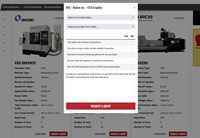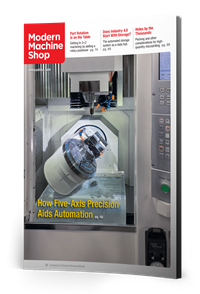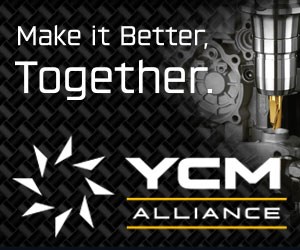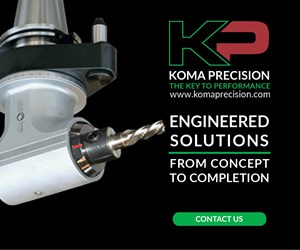In Machine Tool Research, Learn to Compare and Contrast
A frequent Techspex user shares how the database enables him to more easily gather competitive quotes for machine tool acquisitions.
Share





Hwacheon Machinery America, Inc.
Featured Content
View More
Takumi USA
Featured Content
View More



In preparation for February’s edition of Machine/Shop, I checked in with some of the “power users” among those registered to access Techspex, the free online machine tool database. It’s interesting to learn about how different users approach the database tools for different needs. After all, Techspex users range across end markets, from aerospace to medical, from energy to automotive. They also vary widely in size and scope, including job shops of all sizes, as well as big manufacturers like General Electric, Boeing and Nissan North America.
Mirko Dakic, for example, is a capital planner for Magna Powertrain, a global automotive manufacturer, assisting its North American divisions in capital investment. He explains how he uses Techspex to help him do his job: “As capital planner, I use Techspex to cross-reference and learn about different machine brands and models capable of the same job. In order to gather three competitive quotes, I use the list of machine tool builders along with the list of current and previous models to find possible alternative suppliers.”
Mr. Dakic describes two processes that make Techspex a potentially useful tool for research prior to acquiring a new machine, no matter the size of the shop: cross-referencing machine models and gathering competitive quotes.
As he suggests, it’s important to be able to compare models that are capable of similar work when looking for a new machine. While some OEM websites can show specifications of their own machines in a comparative chart, it can be difficult to do the same among machine makers. Techspex enables users to compare machine tools side by side, across brands. First, they can select a machine type (turning, milling, grinding or EDM). This provides a set of fields enabling a query of machines that align with specific specification ranges (chuck or bar diameters, horsepower, turning length, number of spindles and direction, for example). Users can also narrow the query to include only specific manufacturers. In the results list, they can mark models and generate a spreadsheet that compares them spec-for-spec.
While cross-referencing machine data is useful for narrowing a new machine tool search, moving to acquire a machine requires additional information. As Mr. Dakic explains, it is useful to get multiple quotes to further refine the potential choices by cost. In any Techspex machine model listing, users can click the “RFQ” button to generate a detailed form that requests quotes from relevant machine suppliers and distributors.
Techspex users get free access to these tools and more by registering at techspex.com.
This blog post originally appeared at techspex.com.
Related Content
-
Orthopedic Event Discusses Manufacturing Strategies
At the seminar, representatives from multiple companies discussed strategies for making orthopedic devices accurately and efficiently.
-
How to Mitigate Chatter to Boost Machining Rates
There are usually better solutions to chatter than just reducing the feed rate. Through vibration analysis, the chatter problem can be solved, enabling much higher metal removal rates, better quality and longer tool life.
-
Quick-Change Tool Heads Reduce Setup on Swiss-Type Turning Centers
This new quick-change tooling system enables shops to get more production from their Swiss turning centers through reduced tool setup time and matches the performance of a solid tool.





































